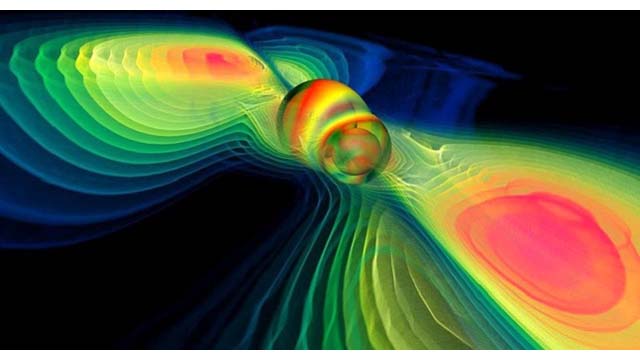
Scifest Africa 2016 begins today, 2 March and will run until 8 March. This year’s theme, “A matter of time”, could not be more relevant to the recent discovery of gravitational waves last month - a spacetime distortion. This means that distance shrank momentarily. Time was lengthened. But you wouldn't be blamed for not noticing -- the time from one clock tick to the next was changed by one part in 10^21. That's a decimal place followed by 20 zeros and, finally, a one. This phenomenon is caused by the passage of a “gravitational wave.'
Local scientists in the Rhodes University Mathematics Department happen to make up South Africa's first gravitational wave research group, and have been developing the theoretical models that contributed directly to this observation. These scientists will be at the Mathematics Department stand at Scifest to share their experience and knowledge with visitors to Scifest and better explain what these gravitational waves are. For those unable to attend, Prof Pollney, who has been working on binary black hole modelling for over twenty years, explains what these gravitational waves are and the Maths models that his Department have been developing which have contributed to the detection.
“Gravitational waves are a prediction of Albert Einstein's. His theory of general relativity is a theory of gravity, but it is one which is built on geometry, the study of shapes and surfaces. Relativity is a radical departure from the old idea that gravity is a force that pulls things to Earth. Instead, according to Einstein, a heavy object distorts the world around it, stretching space and time like a ball on a rubber sheet. When a football arcs in the air and comes back to earth, it is actually following the straightest possible path within a spacetime that is curved,” shares Pollney.
Therefore when heavy objects move in space, they distort the space fabric and send ripples through space like ripples on a pond but these move at the speed of light which makes measuring them very difficult.
Over the past several decades, ambitious scientists have built the most precise measuring devices in the world for exactly the purpose of analysing these distortions of spacetime. The LIGO instruments (Laser Interferometer Gravitational wave Observatory) in America, and its companion, Virgo, in Europe, involve four-kilometre long arms arranged in an L-shape.
Lasers are reflected from rigidly stable mirrors at the ends. By analysing how the laser light interferes with itself, they are able to make these absurdly accurate measurements of the tiny distortions of space caused by a passing gravitational wave.
“What has energized the astrophysics community most of all has been the event which created the wave that was caught by LIGO. Every gravitational wave signal carries the fingerprint of the source which created it. And this wave was so large that the pattern was unambiguous,” states Pollney.
Black holes are another outrageous prediction of general relativity and this is the special focus of scientists working at Rhodes.
“Blackholes are collapsed stars, and actually composed of nothing. But the geometry around a black hole has become so distorted that even light cannot escape if it gets too close. Black hole mergers, when two of these things smash together, have long been proposed as the strongest possible sources of gravitational waves. Except that nobody had ever seen one until last month, and nobody could really be sure what their gravitational wave signature would look like,” explains Pollney.
Scientists in the Rhodes Mathematics Department have been collaborating with colleagues in Germany, Spain, France and the US on mathematical and computational models of how these exotic objects merge.
“We've been identifying the gravitational wave fingerprints of these events, which allows the experimenters to determine exactly what they are looking at when they see a wave signal. It was a genuine career highlight to see the observed signal line up exactly with the theoretical predictions. Whereas before last week our orbiting black hole models were somewhat of a curiosity on the boundaries of sensible science, now they're established astrophysical events, as real as the sun and the moon,” says an excited Pollney.
Thus, the observation of gravitational waves, while the main highlight of last month’s announcement, has opened up an exciting era for scientists in the field.
“We are hearing that there are multiple more signals in the current pipeline. The next generation of detectors is already being planned in Germany, Japan and India. And the SKA, another ambitious project with a significant Rhodes involvement, will have its own story to tell about gravitational waves. Meanwhile, we're keeping our pencils sharp and computers running at full speed to keep our theoretical models ahead of these amazing new discoveries,” shares Pollney.
To keep abreast of all things Science, visit Scifest Africa taking place at the 1820 Settlers’ National Monument, find all you need to know at http://www.scifest.org.za/index.php?pid=4.
Picture: Supplied
